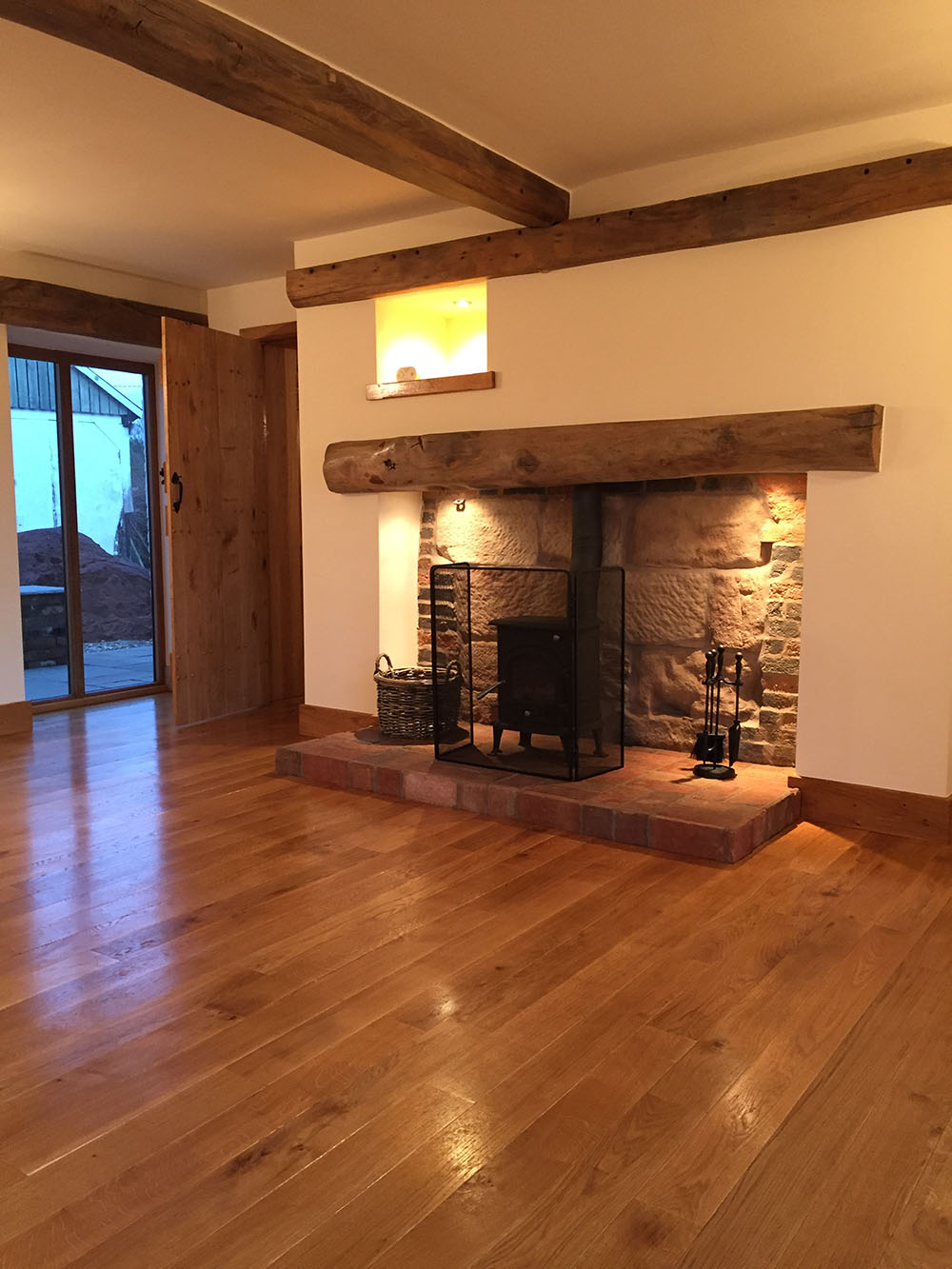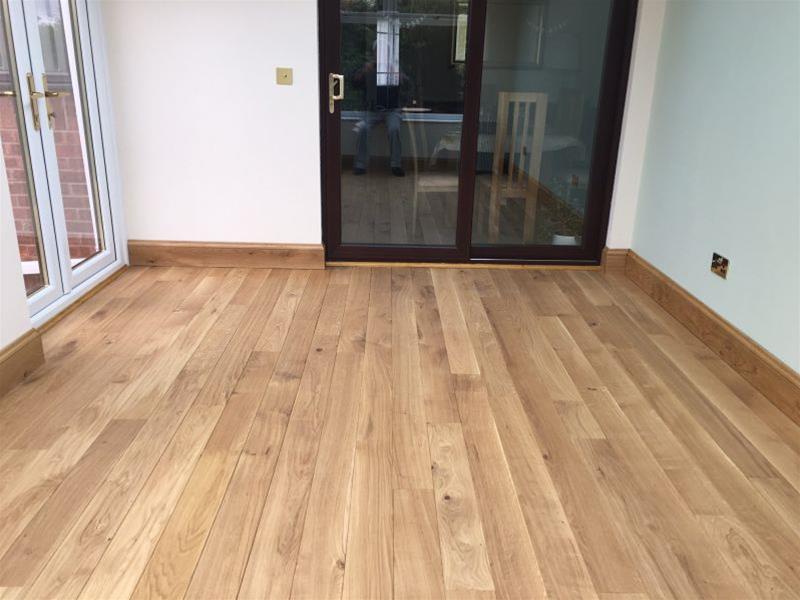Articles: Taking Care Of Your Oak Flooring
As with any quality product, aftercare and maintenance is paramount to ensure you get the most out of your purchase.
Oak flooring is no different, whether its engineered for that added stability and cost effective price or it’s solid oak hardwood crafted into beautiful traditional oak flooring, both need particular care to preserve longevity.
Good preparation and attention to detail goes a long way with oak flooring, lets see what you can do to make it a staple and eye catching feature in your home.



Preparing your oak flooring
Oak flooring whilst kilned to a stable level will need to be installed in such a way as to account for moisture movement throughout the seasons. With temperature and humidity changes over time, all timbers will undergo moisture movement especially so in centrally heated homes.
Before laying the oak flooring it will need to be acclimated to the room so once received you will need to store them in the room, sticked if possible, to allow for airflow between the pieces. This will ensure the oak has time to acclimatize and find an equilibrium to stay as stable as possible.
We all know that projects must move forward and deadlines loom but the longer they can sit, the better. We do advise a minimum of atleast a week and within the same conditions that they will be installed in.
If you plan on adding treatment to the oak flooring now’s the time to do it, after they’ve stabilized and they’re primed for absorption. You can treat them before the storage period while you’re separating the layers to be stripped as they are already dried.
When oiling, take care not overdo it, less is more as the saying goes.
Installing oak flooring
Once your oak flooring has settled and any treatments are applied, its time to fit the boards together. Our biggest top tip here is to leave a slight amount of wiggle room in the tongue and groove of each board. This will help manage the expansion and shrinkage throughout the seasons, connecting them too tightly may cause peaking/buckling.
Our oak flooring fitting guide can be found here: Oak Flooring Fixing Guide
Oak flooring aftercare
You’ve prepared the timber, you’ve installed it with all the right techniques and it looks stunning. What should you do now?
Spillages are the first culprit you need to keep an eye out for, whether it’s a splash from a minor tea incident or you’ve gone slightly overboard watering your lovely plants, clean it up right away, you’d be surprised how quickly it can get absorbed.
Humidity is something else to keep an eye on, you must aim to maintain the same levels year round as the boards have been acclimated to. You can go one step further and invest in a moisture meter to check the pieces periodically so that you can react accordingly before any issues occur.
Aside from that there’s not much else you can do but enjoy your exquisite new solid oak flooring.
Should I buy Engineered Oak Flooring
As with any “should I..” question, it depends.
If you’re not familiar with the term, Engineered flooring is plywood backed planks that are topped with a very thin piece of hardwood or softwood. Our engineered oak flooring for will either be 11mm plywood and 4mm hardwood or 14mm engineered ply and 6mm hardwood.
The main decider for using Engineered Flooring over Solid Hardwood Flooring is largely down to budget. Once installed, they look very similar and so for those who are mainly looking for the oak aesthetic but with with less of the hassle, engineered flooring may be the way to go.
Fitting is straight forward, the aesthetic is comparable and maintenance is low, especially when supplied pre-oiled or pre-lacquered.
That said your options are fairly limited due to the prefabrication of the planks. Solid hardwood flooring is much more flexible than engineered flooring and you can specify widths, finish, lengths and even planking patterns.
Additionally, the pieces can be re-sanded and retreated to refresh the appearance of the flooring as time goes on which is particularly ideal after longer installation periods.
Furthermore, solid flooring isn't limited to Oak. Whilst its a timeless and traditional look, you can also use different species of timber such as American Maple and American Black Cherry.
Closing thoughts
Solid oak flooring is the ideal if you're prepared to put in the preparation and aftercare to maintain the flooring and ofcourse, you have the budget.
Engineered Oak flooring is the perfect solution for those looking to get that traditional aesthetic but without the worry of movement issues and maintenance.







 Main Menu
Main Menu



